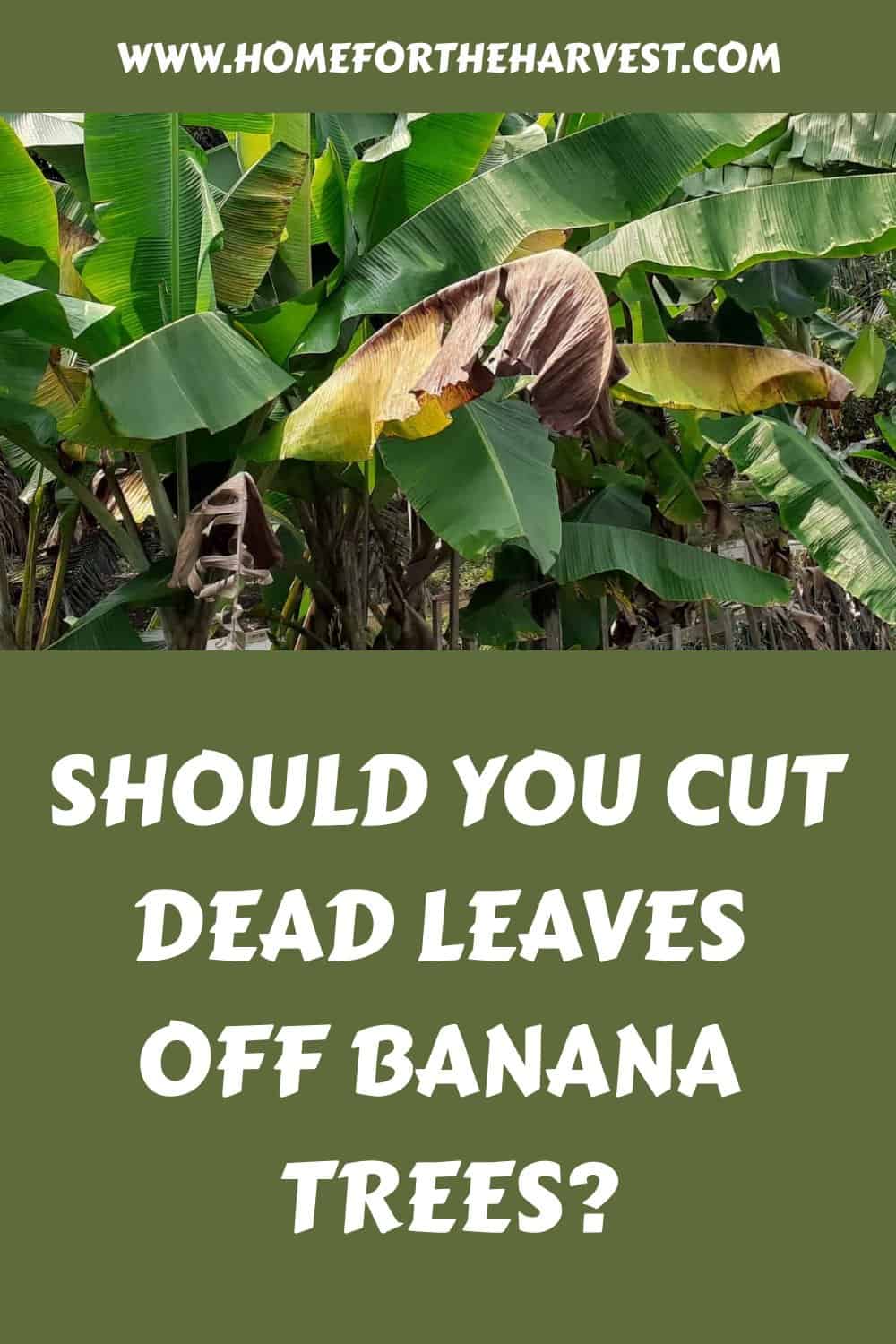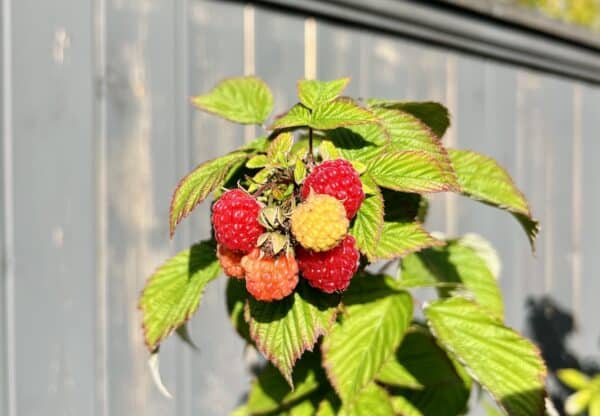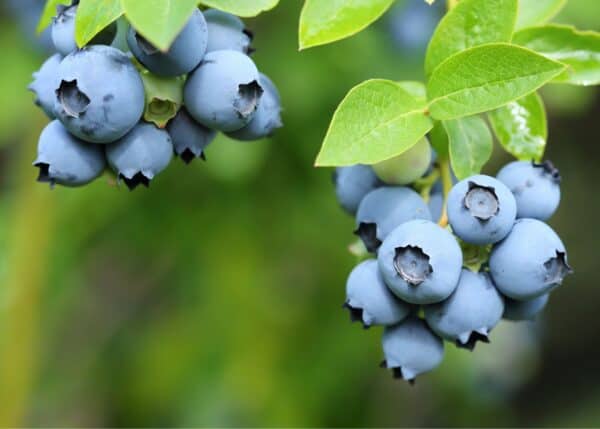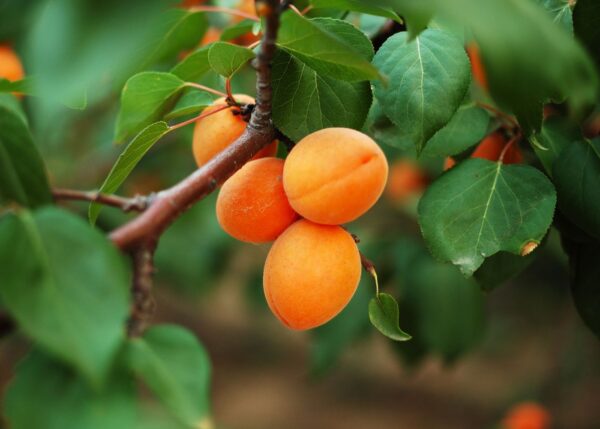Wondering if you should cut the dead leaves off your banana tree? It’s a common question for gardeners growing bananas both in the ground and in large pots.
Cut the dead leaves off banana trees as soon as the leaves are dead. Trimming back dead leaves from a banana tree and pruning the tree can help encourage growth. It also helps the banana tree to retain its attractive look. It can also help minimize pest and disease issues.
Read on to learn all about care and maintenance for your banana tree leaves.
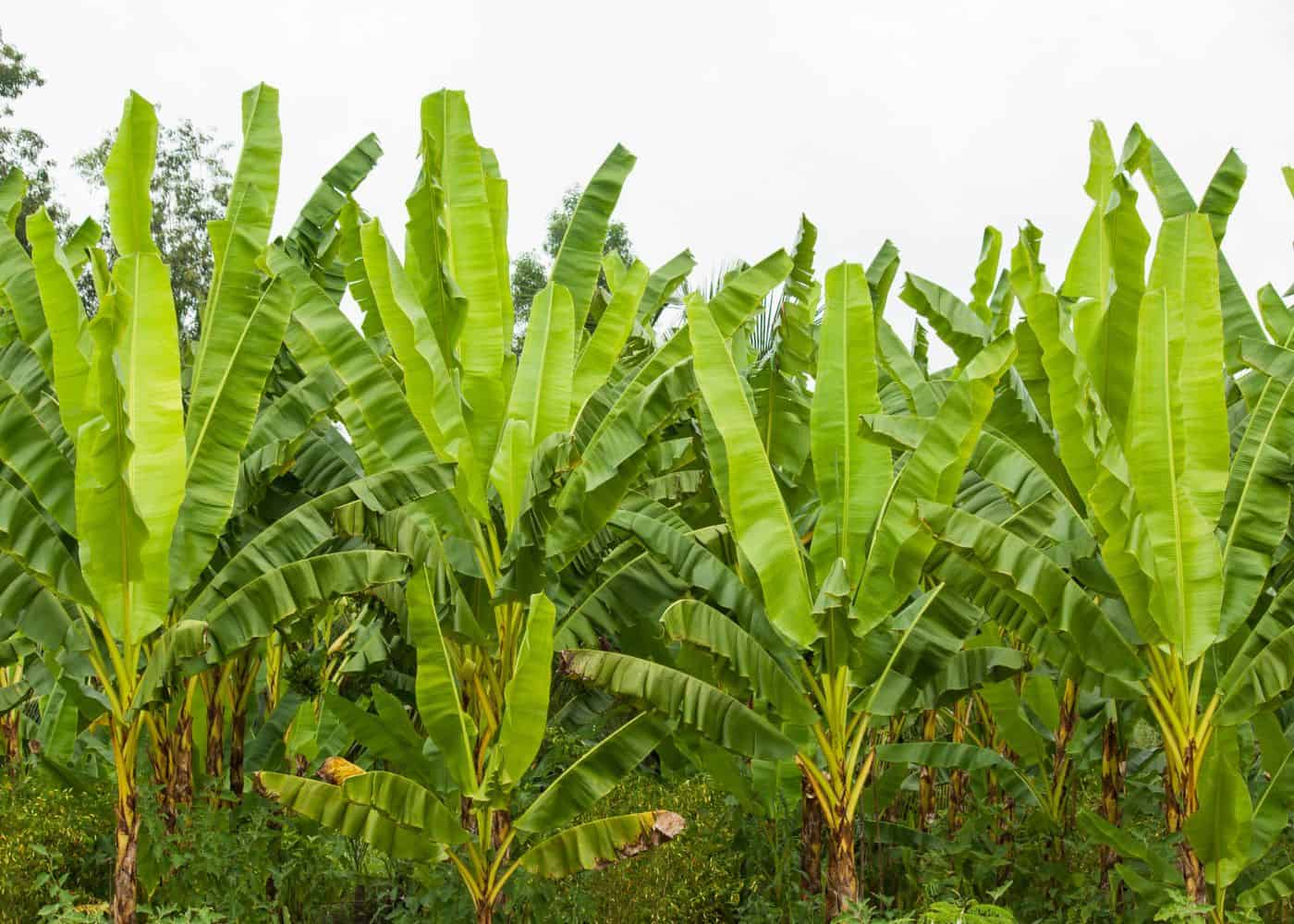
Dead leaves on banana trees
Typically, dead leaves dry out and turn brown when the tree doesn’t get a sufficient supply of water or simply as they age. In a similar vein, banana tree leaves may also turn a yellow hue due to disease, because of overwatering, or from being exposed to cold temps. These yellow banana leaves should be trimmed away to keep the banana tree healthy and thriving.
Trimming your banana tree can help revive it and restore it to its former glory. Banana tree leaves can be massive, easily growing to lengths of 10 feet and widths of up to 4 feet. Because of this, you may need to rely on a ladder to reach the areas of your tree where dead leaves are a problem.
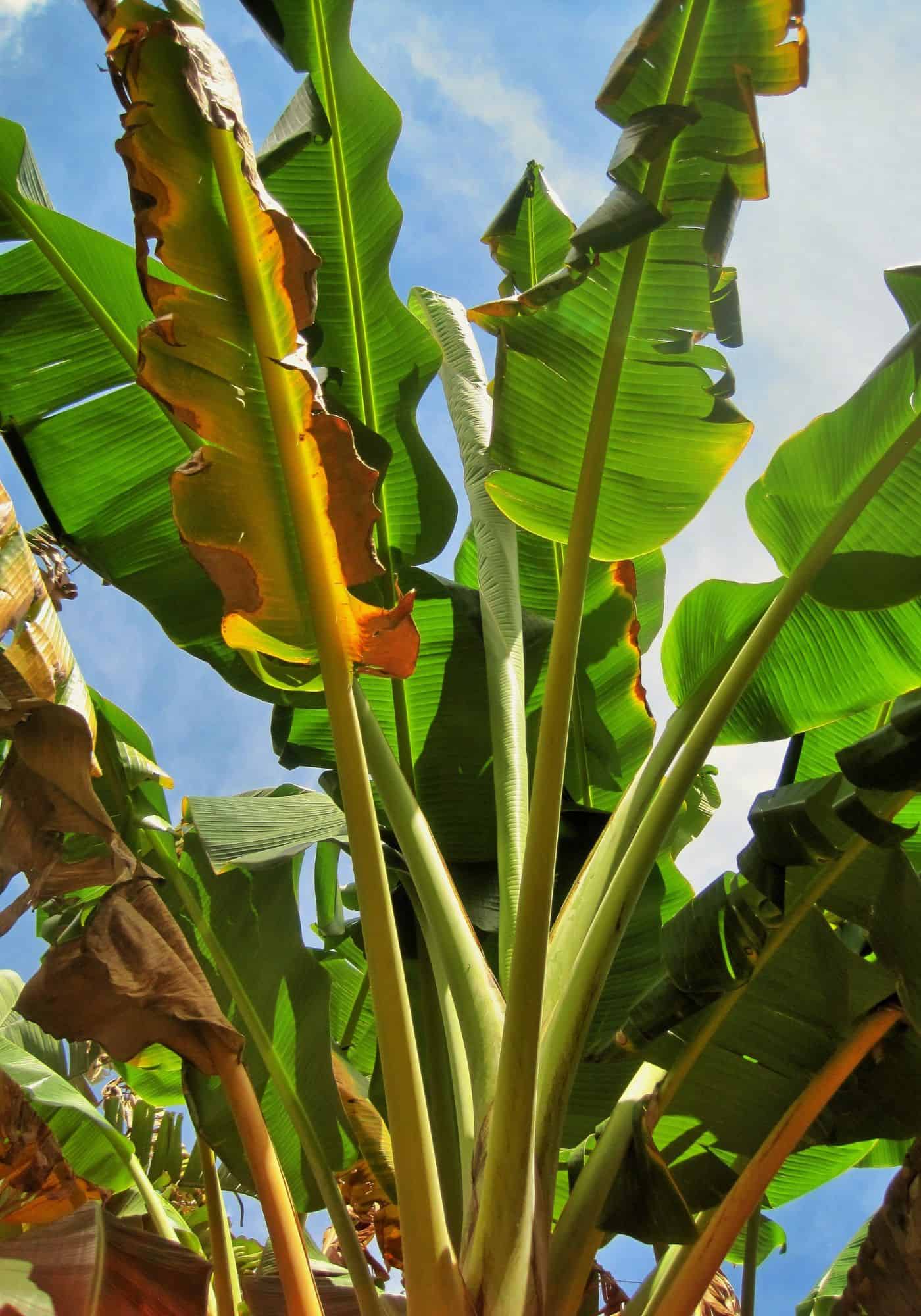
How to remove dead leaves from banana plants
Using sharp garden shears or a sharp knife and working at a 45-degree angle, cut away leaves on the tree’s outermost layers, and then work toward its trunk. It’s important to avoid damaging the pseudostem of the banana tree when cutting away dead leaves.
Cuts should be made in the area where the banana stalk and stem meet, leaving around a half-inch between the tree’s trunk and main stalk. This allows the tree’s rhizome to retain its viability, so your banana tree can flourish again when spring rolls around.
How far should you cut dead leaves back? When trimming back your tree’s dead leaves, be sure to cut a banana leaf down to the tree’s trunk. This not only improves the look of the tree, making it more pleasing to the eye but also stimulates the banana tree’s flowering capacity, producing more fruit.
Spent banana leaves can be composted at home if they are free from disease. Diseased leaves should be discarded or sent to a municipal hot composting facility.
When should you cut dead leaves from your banana trees?
Healthy banana leaves are verdant and green. Prune banana trees and cut back the dead leaves on your banana trees before cold weather or the first hard frost to help ensure the abundance of next year’s crop. Cutting these dead leaves off now ensures your banana tree is ready for new growth once winter ends.
There are other times you may need to prune your banana tree. If its leaves show telltale signs of disease, insect damage, suckers, splitting, discoloration, dryness, or wilting, then cutting away dying or yellow leaves may help restore the tree to better health. In addition, if leaves of the banana tree rub up against the bananas, crop yield and the tree’s ability to produce fruits can be inhibited, so those banana leaves can be cut away.
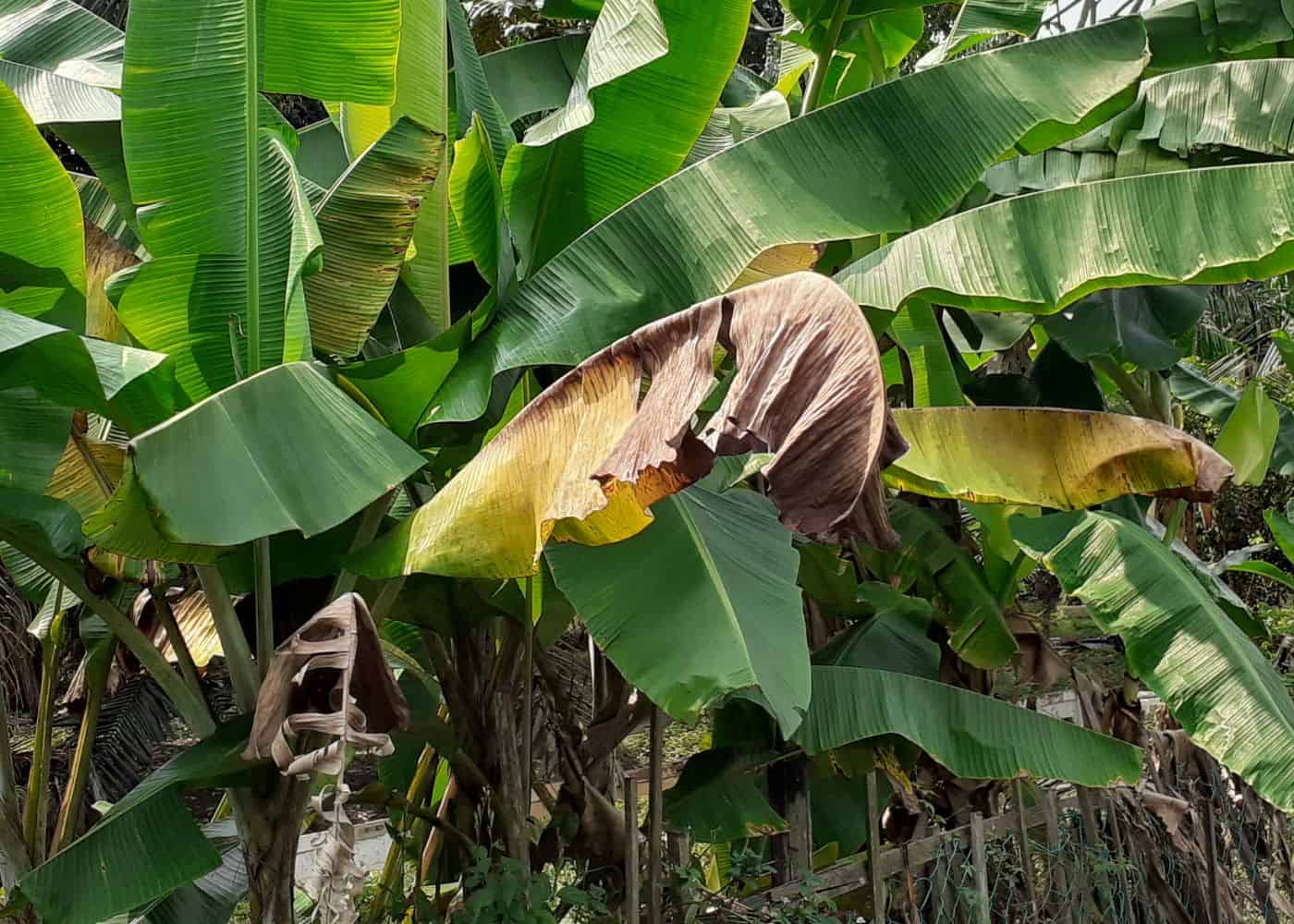
Why do banana tree leaves die?
Poor tree nutrition and lack of water are two of the main reasons that banana leaves begin to die and turn brown. Sometimes there is a problem with the root system of the tree that results in nutrient delivery failure. Leaves may also just age out of productivity as they are replaced with younger leaves.
Further, if a banana tree is exposed to overly dry or cold weather, its health can be impacted. Banana trees only do well in zones 9 and 10, including areas such as South Florida.
Remember, banana trees fall under the tropical plant category, requiring very specific climates to prosper, including a frost-free environment. This is one reason that bananas are not commercially produced in the United States.
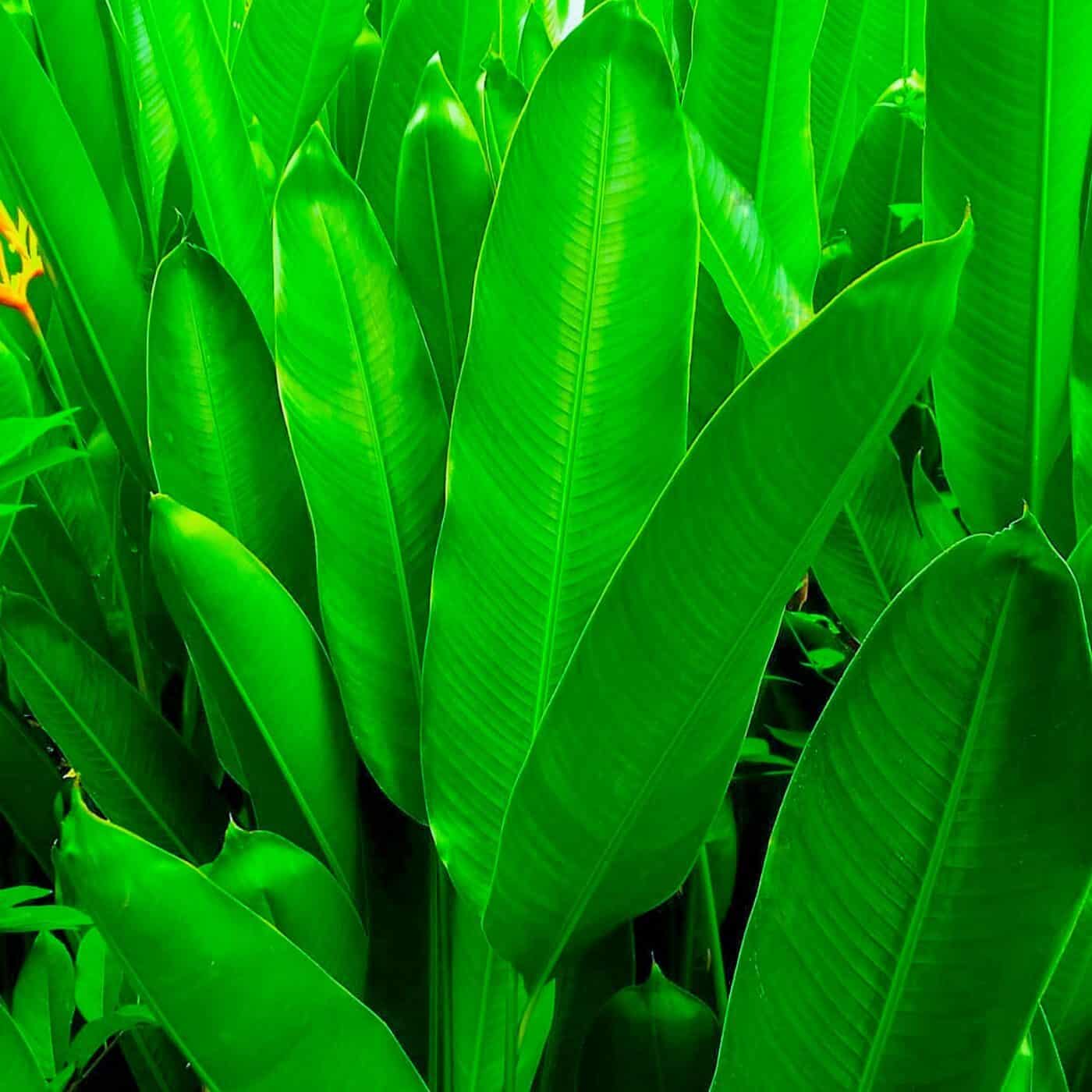
How long do banana trees live?
As long as your banana tree remains vital, you can expect new growth from the trees to emerge from the trunk’s topmost part. Should you cut dead leaves off your banana tree and then notice no new growth in the spring, then the banana tree may be dead. Make sure the tree has ample heat, sunlight, and water before declaring it done with.
Banana trees live for an average of six years or so. If your tree doesn’t come back to life in the spring, then it has potentially reached the end of its lifespan. At this point, you can chop the tree down. If the tree dies prematurely due to disease, be sure to dig up its roots and destroy them to prevent future disease.
References
- University of Florida, Gardening Solutions: Banana
- New Mexico State University, Growing bananas in New Mexico
- The University of Arkansas, Plant of the Week: Banana


